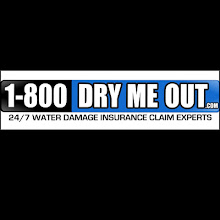Mold and Mildew: Is there a difference?
Often, we hear the words mold and mildew used in sync. Cleaning products especially brag about their ability to remove mold and mildew. But what exactly is mildew anyways and how does it relate to mold?If you do any research, you may discover that the information out there tends to contradict itself. There are generally two schools of thought concerning mold and mildew: 1) mold and mildew are the same or 2) mold and mildew are not the same. Advanced Restoration, Inc. leans towards the school that believes that mold and mildew are not the same substance. Let’s break it down.
Mold is what we term microscopic fungi that grow in long, branching filaments and that are multicellular (these filaments are called hyphae incidentally). There are thousands of species of mold and mold derives its energy from the organic matter in which it lives. Mold produces mold spores. Most spores remain airborne indefinitely and can resist extreme temperatures and pressures. Molds are only visible to the naked eye when colonies grow.
Mildew is actually a general term for growth produced by mold fungi; different fungi produce different types of mildew. Mildew appears in a variety of forms to include spores that look like sugar, spots and discolorations on leaves as well as downy patches. There are two main types of mildew: powdery and downy. Powdery mildew appears as small white or gray patches and is commonly found on flowers. Powdery mildew is not fatal though it may impair photosynthesis. Downy mildew varies in appearance as well and may look like yellow or tan, angular or blotchy spots on leaves or white fuzz that engulfs the organic material it grows on. Downy mildew commonly forms on grapes, cucumbers, potatoes and even flowers. Mildew will grow in an environment that is damp with poor air circulation. Thus, to help prevent the occurrence of mildew on plants or crops, avoid crowded plantings, try to grow mildew-resistant varieties and don’t grow varieties susceptible to mildew in the shade.
In sum, it is our opinion that the discolored growth in your shower or tub is not mildew; rather, it is mold. So why the discrepancy? Mildew sounds less severe than mold. “Oh, that’s just mildew in the corner” makes it sound as if the problem will go away with the blink of an eye compared to thinking that you have mold growing. Everybody knows that if you have mold, then you’ve got a problem.
For easy ways to control mold yourself, visit our website for some great tips and ideas. If you feel like the mold growing in your home is too much for you to handle, you can always call a top mold removal company to come and perform a mold inspection. Mold inspectors will be able to determine the severity of the mold growth and advise you on the actions needed to remediate your property.
For more information about please contact Advanced Restoration, Inc. at 1-800-DRY-ME-OUT or www.drymeout.com.
Advanced Restoration proudly services Hillsborough county (Wesley Chapel, Town and Country, Brandon, Ruskin and more), Pinellas County (Clearwater, Palm Harbor, St. Petersburg, Pinellas Park and more), Pasco County (Trinity, New Port Richey, Zephyrhills, Holiday and more), Hernando County (Brooksville, Springhill, Weeki Wachee and more)Manatee County (Bradenton, Palmetto, Anna Maria and more) and Okaloosa County (Fort Walton Beach, Crestview, Shalimar and more).

